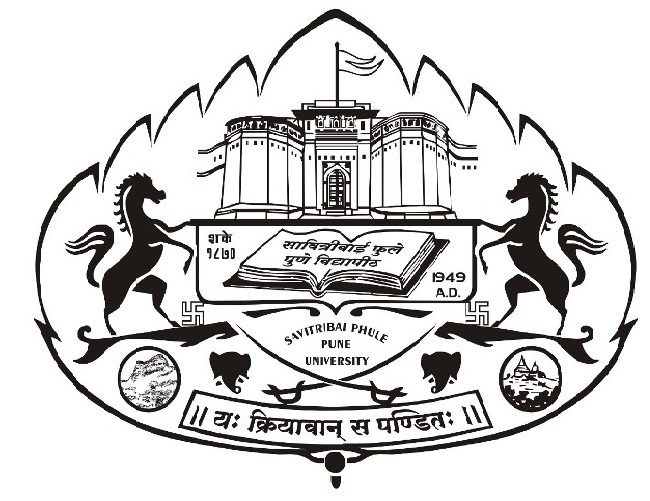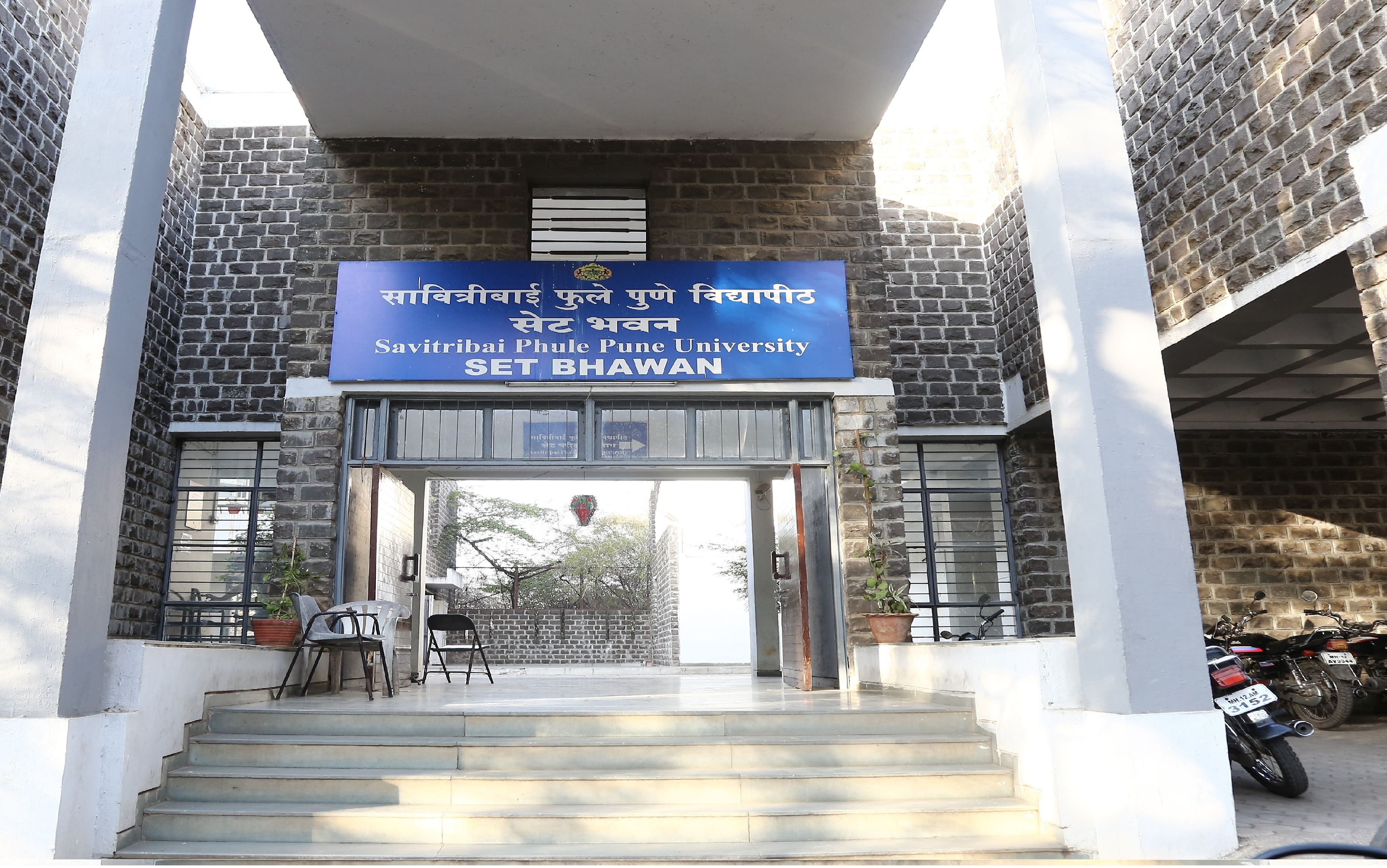MH-SET Exam Question Paper Maharashtra State Eligibility Test : Savitribai Phule Pune University
Organisation : Savitribai Phule Pune University
Recruitment Name : SET Exam Maharashtra State Eligibility Test (MH-SET) for Assistant Professor
Document Type : Question Paper
Year : 2024
Website : https://setexam.unipune.ac.in/QuestionPaper.aspx
Savitribai Phule Pune University SET Question Paper
Paper I :
Time Allowed : 60 Minutes
Maximum Marks : 100
Note : This Paper contains Fifty (50) multiple choice questions, each question carrying Two (2) marks. Attempt All questions.
1. If taught on memory level of teaching, the students get tremendous power for acquisition of ……………… .
(i) factual information
(ii) generalized insight
(iii) problem solving abilities
(A) Only (ii)
(B) Only (i)
(C) (i) and (ii)
(D) (ii) and (iii)

2. The teacher should choose teaching method considering …………….. .
(i) Nature of the learners
(ii) Nature of the objectives to be realized
(iii) The teacher’s own ability and proficiency
(A) Only (i)
(B) (i) and (ii)
(C) (i), (ii) and (iii)
(D) Only (ii)
3. What is the main characteristic of gifted students ?
(A) They are introvert in nature
(B) They are dependent of their peers
(C) They are extrovert in nature
(D) They are independent in their judgement
4. For adult learners, instruction needs to focus …………….. .
(A) equally on the process and the content to be taught
(B) less on the process and more on the content to be taught
(C) more on the process and less on the content to be taught
(D) equally on the process and the product of learning
5. …………………….. evaluation gives a clear idea about understanding of the student regarding particular content.
(A) Placement
(B) Formative
(C) Summative
(D) Diagnostic
6. ……………….. is the characteristic of qualitative research.
(A) Emphasis on numerical data
(B) Focus on statistical analysis
(C) In-depth exploration of meanings and experiences
(D) Strict adherence to experimental designs
7. ……………. is a limitation of positivism in research.
(A) It ignores the importance of empirical evidence
(B) It tends to oversimplify complex social phenomenon
(C) It places too much emphasis on subjective interpretations
(D) It encourages bias and personal opinions in research
8. ………………. is referred as “citation” in the academic writing.
(A) A reference to the author’s personal experiences
(B) A way of giving proper credit to the original source of information
(C) A fictional element added to enhance the narrative
(D) A personal opinion included without supporting evidence
9. …………… type of research misconduct involves making up or falsifying data.
(A) Plagiarism
(B) Fabrication
(C) Misinterpretation
(D) Biased sampling
10. …………………. ICT tool is essential for creating and managing biblio- graphies in research papers.
(A) Statistical software
(B) Reference management software
(C) Spreadsheet software
(D) Project management software
11. Which of the following messages is less likely to be misunderstood or misinterpreted due to cultural or linguistic background of the receivers of the message :
(A) message full of written words
(B) message full of spoken words
(C) message full of body-gestures
(D) message full of iconic signs
12. In the context of contemporary digital paralance what are the following symbols collectively called as :
: – ) : – ( ; – ) : – ×
(A) Emoji
(B) Emoticons
(C) Smiley
(D) Stickers
13. In the context of non-verbal communication identify the incorrect statement :
(A) Silence is a means of communication
(B) Non-verbal cues and messages are easy to control
(C) Non-verbal messages are culture sensitive and relative
(D) In case of confusion, people tend to trust non-verbal communication more than the verbal
14. What is Prasar Bharati ?
(A) It is the national level news channel under Door Darshan
(B) It is a news broadcasting service of All India Radio (AIR)
(C) It is the association of private broadcasters in India
(D) It is India’s state owned Public Broadcaster
15. Which of the following elements is facilitated much more in a communicative situation wherein teacher and students are sitting together in a circular manner facing each other ?
(A) effectiveness of the content of teaching
(B) teacher’s power to control every student
(C) discipline amongst the students
(D) level of interactions between the students
Download Question Paper : https://www.pdfquestion.in/uploads/pdf2024/42888-q.pdf
Instructions for the Candidates
1. Write your Seat No. and OMR Sheet No. in the space provided on the top of this page.
2. This paper consists of Fifty (50) multiple-choice type of questions. Each question will carry two marks. All questions of Paper I will be compulsory.
3. At the commencement of examination, the question booklet will be given to the student. In the first 5 minutes, you are requested to open the booklet and compulsorily examine it as follows :
(i) To have access to the Question Booklet, tear off the paper seal on the edge of this cover page. Do not accept a booklet without sticker-seal or open booklet.
(ii) Tally the number of pages and number of questions in the booklet with the information printed on the cover page. Faulty booklets due to any other or any other discrepancy should not be accepted and correct booklet should be obtained from the invigilator within the period of 5 minutes. Afterwards, neither the Question Booklet will be replaced nor any extra time will be given. The same may please be noted.
(iii) After this verification is over, the OMR Sheet Number should be entered on this Test Booklet.
4. Each question has four alternative responses marked (A), (B), (C) and (D). You have to darken the circle as indicated below on the correct response against each item.
Example : where (C) is the correct response.
5. Your responses to the items are to be indicated in the OMR Sheet given inside the Booklet only. If you mark at any place other than in the circle in the OMR Sheet, it will not be evaluated.
6. Read instructions given inside carefully.
7. Rough Work is to be done at the end of this booklet.
8. If you write your Name, Seat Number, Phone Number or put any mark on any part of the OMR Sheet, except for the space allotted for the relevant entries, which may disclose your identity, or use abusive language or employ any other unfair means, you will render yourself liable to disqualification.
9. You have to return original OMR Sheet to the invigilator at the end of the examination compulsorily and must not carry it with you outside the Examination Hall. You are, however, allowed to carry the Test Booklet and duplicate copy of OMR Sheet on conclusion of examination.
10. Use only Blue/Black Ball point pen.
11. Use of any calculator or log table, etc., is prohibited.
12. There is no negative marking for incorrect answers.

Scheme of Examination for SET
a) The SET will be conducted offline in Objective Mode. The test will consist of two papers. Both the papers will consist of only objective type questions and will be held on the day of Examination in two separate sessions without break as under :
Session Paper Number of Multiple Choice Questions Marks Duration
First I 50 questions all of which are compulsory 50 x 2 = 100 1 hour (10.00 a.m. to 11.00 a.m.)
Second II 100 questions all of which are compulsory 100 x 2 = 200 2 hours (11.30 a.m. to 01.30 p.m.)
b) Paper-I shall be of general nature, intended to assess the teaching/research aptitude of the candidate. It is primarily designed to test reasoning ability, comprehension, divergent thinking and general awareness of the candidate. Paper I shall consist of fifty (50) objective type compulsory questions, two marks each.
** Paper I has 4 sets with 4 different Test Booklet Codes viz. A, B, C, D. Student has to ensure that the same Test Booklet Code is pre-printed and pre-shaded on the OMR sheet (Answer Sheet) of Paper I.
** Paper-II shall consist of hundred (100) objective type compulsory questions, (except mathematical science) based on the subject selected by the candidate. Each question will carry two marks. In Mathematical Science, a student has to attempt all questions (100) either from Sections I & II or from Sections I & III only. The OMR sheets with questions attempted from both sections viz., II & III, will be rejected.
** Paper II of each subject has 4 sets with 4 different Test Booklet Codes viz., A, B, C, D. Student has to ensure that the same Test Booklet Code is pre-printed and pre- shaded on the OMR sheet (Answer Sheet) of Paper II.
** Top part of the OMR sheet will be given to each student along with Admit Card to practice writing and shading of Seat No., Subject Code (For both the papers).
** All questions of Paper-II will be compulsory, covering updated syllabi for all subjects.
** The Candidate will have to mark the responses for questions of Paper-I & Paper-II on the Optical Mark Reader (OMR) Sheet provided along with respective Test Booklet.
** No corrections in the OMR sheets are permitted. In case of corrections, the candidate shall be responsible for his/her loss.
** The detailed instructions for shading subject code, seat number and responses on the OMR sheet are given under item No. 14 on page 18. It may be noted that these instructions to candidates will not be sent to any of the candidate by post.
c) The candidate has to return the original OMR sheet to the invigilator on conclusion of each session. However, the candidates are allowed to carry the Test Booklet of Paper-I and II along with duplicate copy of OMR sheets (carbon less copy) on conclusion of examination only.
d) There will be no negative marking.